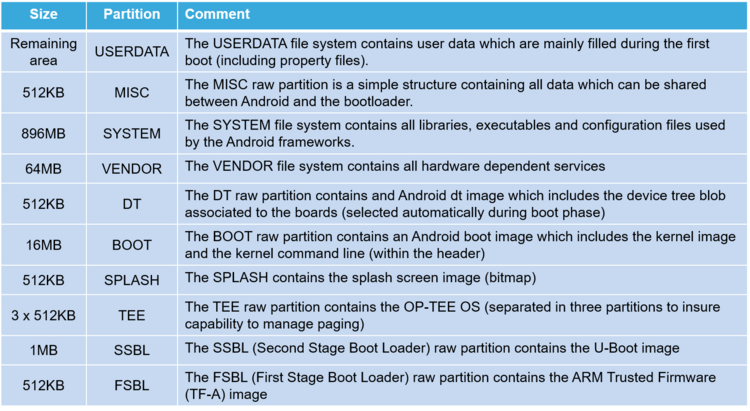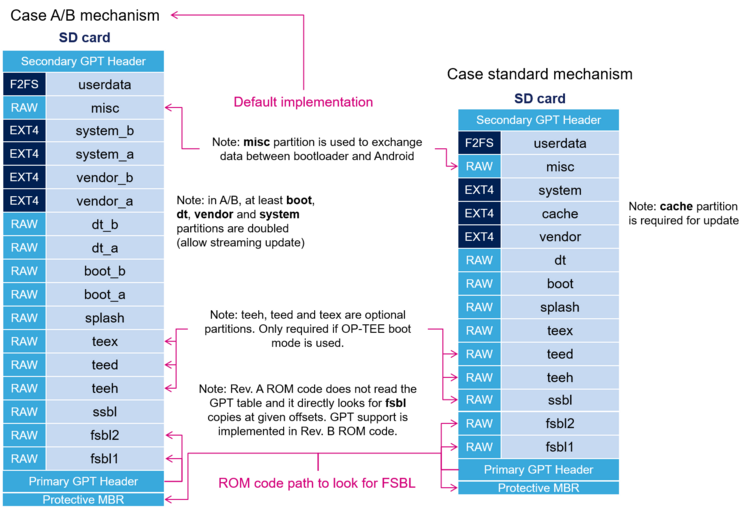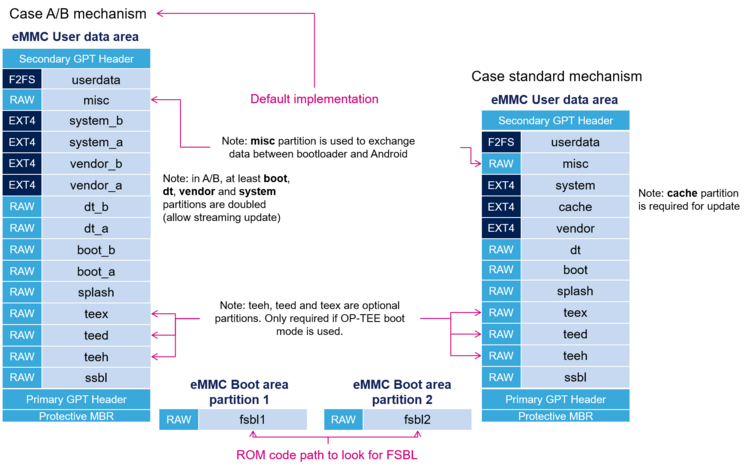1. Supported Flash memory technologies[edit source]
The STM32MP15 boards support different kind of Flash memories:
- A SD card connected to an SDMMC interface, which is present on Evaluation and Discovery boards.
- An eMMC connected to an SDMMC interface, which is present on Evaluation board only.
The next section lists all the partitions used on STM32MP15 boards (size, name and content). The following sections show how they are mapped on the different types of Flash memories.
2. From Android 10.0.0 distribution[edit source]
2.1. Flash partitions[edit source]
The table below lists the partitions defined for STMP32MP15 boards.
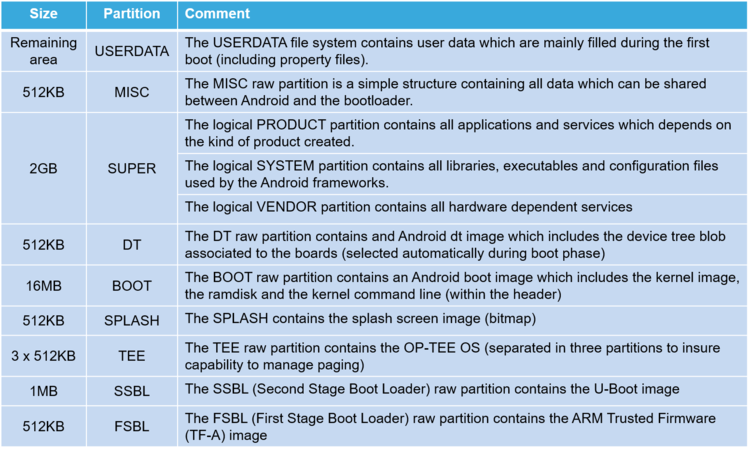
2.2. SD card memory mapping[edit source]
The SD card has to be partitioned with GPT format to be recognized by STM32MP15 microcontrollers. The easiest way to achieve this is to use STM32CubeProgrammer.
The ROM code searches the GPT entries which name begins with "fsbl", such as fsbl1 and fsbl2.
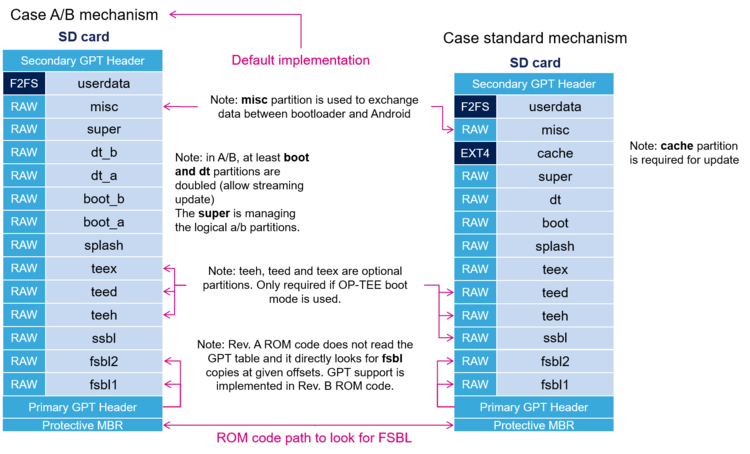
2.3. eMMC memory mapping[edit source]
The eMMC embeds four physical partitions:
- Boot area partition 1: it is used to store the first copy of the FSBL.
- Boot area partition 2: it is used to store the second copy of the FSBL.
- User data area: it is formatted with GPT partitioning and used to store all remaining partitions.
- Replay protected memory block (RPMB): this partition is not shown in the figure below since it is not involved in the current boot chain.
STM32CubeProgrammer has to be used to prepare the eMMC with the layout shown below and to populate each partition.
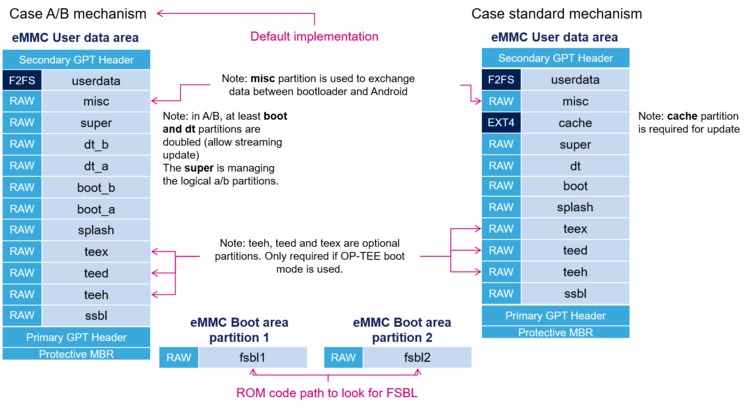
3. For Android 9.0.0 distribution[edit source]
